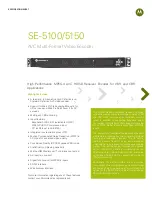
Chapter 1
3
Chapter 1: Connections and Setup
Things to Consider Before Connecting Components
Protect Components From Power Surges
•
Connect all components before plugging any power cords into the wall outlet.
•
Always turn off the TV and other components before you connect or disconnect any cables.
Position Cables to Avoid Audio Hum or Interference
•
Insert all cable plugs firmly into their jacks.
•
Place any Audio/Video (A/V) cables to the side(s) of the TV’s back panel instead of straight down the
back after connecting components.
•
Try not to coil any twin-lead antenna cables and keep them away from all A/V cables as much as
possible.
•
Make sure all antennas and cables are properly grounded. Refer to the
Safety Tips
sheet packed with
your unit for detailed information.
Protect Components From Overheating
•
Never block ventilation slots in any component. Arrange the components so that air can circulate
freely.
•
Do not stack components.
•
Allow adequate ventilation when placing components in a stand.
•
Place an amplifier or other hot component on the top shelf of a stand so heated air rising from it
will not flow around other components.
Ethernet cables
Cables to Connect Components to Your IP Decoder
The pictures below show the cables that can be used for the connections represented in this book.
Audio/Video cables
(included)
Coaxial cable
S-Video cable
(included)
Digital Optical cable
IP900.01 Connections
10/24/03, 12:35 PM
3
Summary of Contents for IP900
Page 29: ...This page intentionally left blank ...
Page 30: ...This page intentionally left blank ...
Page 31: ......






































